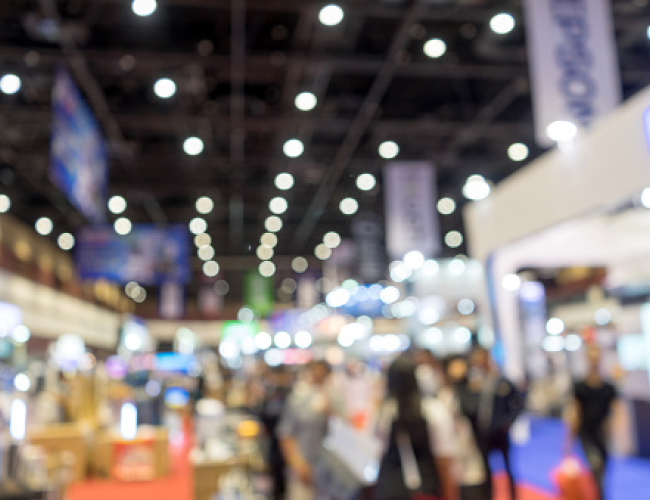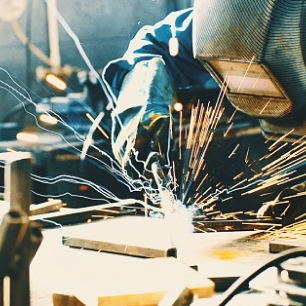Jump to:
Busting the Myths around Welding Aluminum
For decades, welding aluminum has been a challenge. During that time, several myths have surfaced and been passed along. This article will review some of the most common, debunk or prove them, and add tips for best practices.
MYTH: 1. You Can Only Weld Aluminum with A/C GTAW
While gas tungsten arc welding (GTAW) is a great option for aluminum, it isn’t the only option. The myth persists, though. Welding aluminum with gas metal arc welding (GMAW) has come a long way over the last few decades. There are likely welding professionals just entering the field who have never been exposed to the idea that GTAW is not the only way to weld aluminum.
GTAW uses alternating current (AC) for welding aluminum because it delivers a balance between cleaning and fusion depth. Direct current electrode negative (DCEN) is the most common polarity for GTAW with most materials. Electrons flow from the tungsten to the workpiece, resulting in maximum fusion depth. With direct current electrode positive (DCEP), electrons are stripped from the surface of the workpiece to tungsten, effectively cleaning the oxide coating from the aluminum. However, it puts a heavy load on the tungsten, causing it to wear quickly. With AC welding, DCEN and DCEP are combined to provide a good mix between fusion depth and cleaning.
GMAW is used in DCEP, which gives excellent fusion depth and cleans the oxide coating from the surface. GMAW works well on aluminum applications where the base metal is generally equal to or greater than 0.060 in. While GMAW has been used successfully on thinner material under 0.060 in., sometimes GTAW is still the best way for thin aluminum applications.
MYTH: 2. GMAW of Aluminum is Only Possible with a Push/Pull or Spool Gun
Those who know GMAW works for aluminum might believe the only way to weld it is with a push/pull or spool gun process. While this is a great way to work with aluminum, especially for softer filler metals, it isn’t the only way. When using a push-only torch and wire feeder, it’s best to stay in the 5000 series of filler metals, especially for smaller-diameter wires. 4043 can be used at 0.045 in. diameter wire (no smaller), but the lines from the feeder to the torch need to remain as straight as possible. Pushing a soft wire like 4043 through a coiled-up torch will likely produce inconsistent results and may result in tangled wire or bird nests.
For best results in push aluminum welding, use a shorter torch length and a 45 deg or less torch neck angle. However, accessories can get your feeder closer to your workpiece by utilizing a short push torch. These range from a streamlined wire feeder mounted on a wheeled platform to a case-style feeder. Understanding the benefits and drawbacks of each can help you choose which to use. While a case feeder may be cumbersome and heavy to move around, the smaller wheeled feeder could be an option for your application.
MYTH: 3. Pure Aluminum (1100) Filler Metal Works with All Aluminum Base Material
While it might seem logical to use a pure aluminum filler metal when welding aluminum base metals, it isn’t. Your filler metal needs to match your base material and application in a way that makes metallurgical sense. For example, when welding 6061 aluminum, a silicon (Si) and magnesium (Mg) alloy, it’s better to use a 4043 or 5356 filler metal. 5356 has about 4.5–5% of Mg, and 4043 has 4.5–6% Si alloying elements. If pure aluminum is used for filler metal, the percentage of silicon and magnesium can fall into the perfect range for excessive cracking. By using either the 4043 or 5356, you keep the percentages of Si and Mg high enough in the weld deposit to avoid peak crack susceptibility.
MYTH: 4. Welding Aluminum Requires 100% Helium Shielding Gas
An old term for GTAW welding that sometimes still gets used is heliarc. The welding process was originally designed and patented by Russell Meredith in 1941, using tungsten to create the arc and helium as a shielding gas to sustain it. Meredith called it heliarc, and the term still lives on in some areas. While GTAW and heliarc refer to the same welding process, 100% helium is no longer the leading choice for shielding gas. The lower costs of argon and the availability of other gases allow for shielding gas to be chosen precisely for the application and base metal.
FACT: 5. The Anodized Coating Should be Removed before Welding
True. Anodizing is an artificial oxide coating formed by placing the aluminum in a chemical bath and adding a current. This coating can be 1000 times thicker than the natural aluminum oxide. The anodized coating is an insulator, which makes igniting the arc through the coating very difficult when using GMAW. While welding anodized aluminum can be done using GTAW, it takes a lot of practice and special techniques. Aluminum oxide has a much higher melting temperature than aluminum, which leads to the aluminum under the coating becoming molten before the coating burns off, and burn-through is likely. The best practice is to clean off the coating before welding, especially with GMAW.
Best Practices
Parts and fitups aren’t always perfect. Sometimes, you need to create a weave in your weld to get the best fusion. An important factor to keep in mind when using a weave is to keep the width of the weave small to limit possible discontinuities. A wide weave creates more opportunities for incomplete fusion and porosity.
Out-of-position welding is required in many applications. Thanks to aluminum’s high thermal conductivity, simple stringer beads can be used without the need to weave when welding out-of-position. Unlike with other metals, techniques practiced on aluminum in the flat position can be directly applied to out-of-position welding. For aluminum materials 1/8 in. and under, generally weld in a downhill motion. These are thin enough that you don’t have to worry much about incomplete fusion. For thicker than 1/8 in., weld vertical up to reduce the chances of discontinuities like incomplete fusion.
Welding aluminum has been possible since the invention of GTAW in the 1940s, and some of these myths are almost as old. The tips here were mainly for manual welding, but the same basic ideas apply to robotic GMAW aluminum welding. Always start with clean materials, know your process and metal thickness, and be mindful of using the correct personal protection equipment, including proper ventilation.
This article was written by Shaun Relyea (head of technical support at Fronius) and Steve Kornacki (welding business academy instructor at Fronius) for the American Welding Society.


